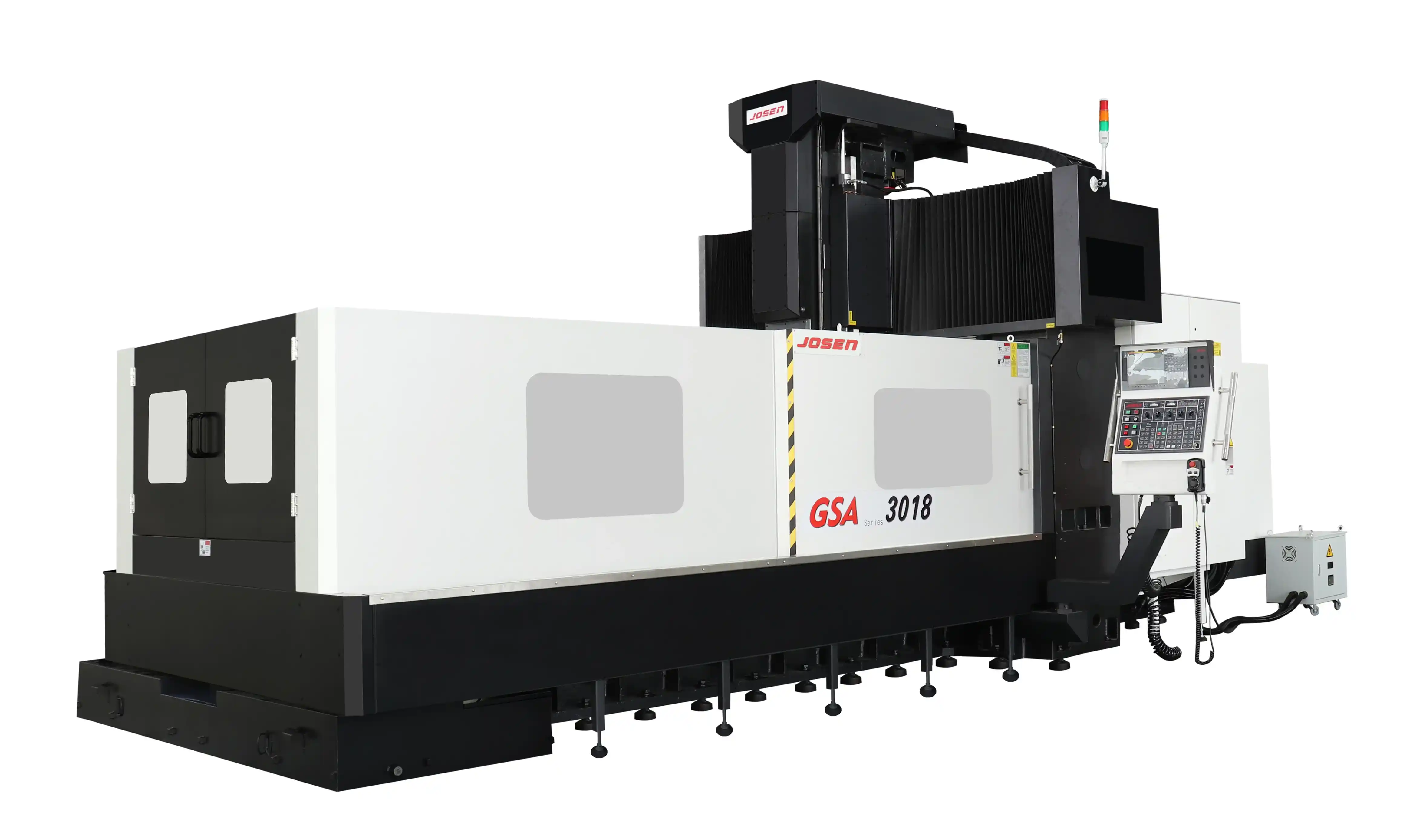- This topic is empty.
-
AuthorPosts
-
08/09/2025 at 16:48 #5711
In today's competitive manufacturing landscape, the demand for precision, speed, and scalability is greater than ever. Industries such as aerospace, energy, mold making, and transportation require machines that can deliver tight tolerances across large components—while maintaining reliability and efficiency. One solution has emerged as the cornerstone of large-part machining: the gantry machining center. This article Josen dives deep into the technical advantages of gantry machining centers.

What Makes a Gantry Machining Center Unique?
A gantry machining center is a high-performance, bridge-style CNC machine designed to handle extremely large, heavy, and complex workpieces with exceptional precision. What makes this type of equipment stand out is its distinct gantry architecture—a horizontal beam (the “gantry”) spans between two rigid vertical columns, allowing the spindle head to traverse across multiple axes above the work area.
Unlike conventional vertical and horizontal machining centers, which typically move the worktable while the spindle remains fixed, the gantry machining center flips this approach. In a gantry system, the workpiece stays stationary while the spindle head and crossbeam move dynamically around it. This structural reversal provides unparalleled access and control, particularly for parts that are too massive or delicate to reposition mid-process.
In many industrial applications—especially aerospace, energy, shipbuilding, and die/mold manufacturing—the gantry machining center becomes indispensable. Its bridge-style design doesn't just offer scale—it's a platform for extreme accuracy, consistency, and customization.
Moreover, most modern gantry machines are modular in architecture, meaning they can be tailored to specific applications. Engineers can extend axis travel, integrate automatic tool changers, add secondary spindles, or even include rotary tables for 5-axis or 6-axis machining. This flexibility allows gantry machining centers to evolve with production needs, offering long-term value and adaptability that's hard to beat.
Deep Structural Advantages of Gantry Machining Centers
Rigid Framework for High-Load Performance
At the heart of a gantry machining center lies its most powerful asset: structural rigidity. The symmetrical gantry-style framework distributes machining loads evenly across both columns, significantly reducing torsional deflection and structural imbalance. This robust design leads to minimal vibration, which is critical when performing high-speed milling or heavy-duty roughing on oversized components.
Manufacturers typically construct the frames from cast iron or welded steel, and many use finite element analysis (FEA) during development to optimize stiffness and mass distribution. Compared to C-frame machines, the gantry machining center holds its geometric alignment far better over extended machining cycles, even under demanding cutting conditions.
This stability is not just theoretical—it results in tangible performance benefits such as smoother surface finishes, longer tool life, and higher dimensional accuracy. In short, the gantry design is not only about size, but also precision under pressure.
Large Travel Range With Uncompromised Accuracy
One of the defining reasons manufacturers invest in a gantry machining center is its ability to handle massive workpieces—frequently those exceeding 10 meters in length or weighing several tons. Yet, despite these impressive dimensions, the accuracy remains extremely tight.
How? Today's gantry machining centers incorporate cutting-edge control systems, including dual linear drives, multi-axis encoders, and real-time thermal compensation. These technologies enable the machine to maintain micron-level tolerances across the entire travel envelope—even during long production runs.
Furthermore, the dynamic positioning system ensures that even with large-scale movement, every motion of the spindle head remains responsive, synchronized, and measurable. This is particularly vital in sectors like aerospace or energy, where component tolerances can directly impact performance and safety.
High Payload Capacity and Seamless Floor Integration
Another often-overlooked advantage of a gantry machining center is its ability to support ultra-heavy payloads directly from the shop floor. Many models are floor-mounted or pit-mounted, allowing extremely heavy workpieces to be loaded without elevated platforms or special cranes.
By keeping the worktable low and grounded, these machines maintain a low center of gravity, which enhances machine stability—especially at high speeds or during aggressive cutting operations. This floor-level design also simplifies integration with other automation systems, such as robotic arms, part conveyors, or pallet changers, making it easier to scale production.
As a result, the gantry machining center becomes an ideal solution for industries where precision meets payload, such as power generation, aerospace structures, and industrial mold manufacturing.
For manufacturers dealing with large, heavy, or complex parts, a gantry machining center is more than just a piece of equipment—it's a strategic enabler of quality, speed, and cost control. With their unmatched structural rigidity, expansive work envelopes, and ability to perform multi-axis machining in a single setup, gantry machining centers bridge the gap between flexibility and precision at scale. Whether you're aiming to reduce lead times, enhance quality assurance, or transition to lights-out manufacturing, investing in a gantry machining center offers a long-term return that extends far beyond its initial cost.
For businesses in high-stakes industries, there's no substitute.
https://www.josencnc.com/Bridge-type-machining-center
http://www.josencnc.com
Josen(Changzhou)Precision Machinery Co.,Ltd. -
AuthorPosts
- You must be logged in to reply to this topic.


